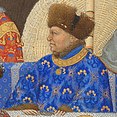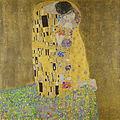Spot color

A spot color , also known as a special color or spot color , is a printing color used in addition to the basic colors in multi-color printing . The term includes spot colors for additional color depth as well as effect colors.
- A solid color cannot be composed of the standard basic colors . This is neither possible in four-color printing , which is based on the CMYK color model ( cyan , magenta , yellow and black ) (usually the process colors or basic colors of the Euroscale ), nor in six-color printing . The reason is that the gamut of color printing does not take into account some important areas of color: As with any three (or when printing four)
color mix remain color-rich, highly colorful tones (full tones) can not be displayed. The CMY color mixture shows clear weaknesses, especially in the area of green and deep blue . The gamut is expanded by adding more colors. - A opaque white , which is its whiteness outside the limited on paper white gamut, one of the special colors, or the opaque Rubbellosfarben of PIN radio spectrum.
- Furthermore, the rasterization (in image processing: dithering ) of light and dark colors in the deep colors leads to blackening, in the pastel colors to color weakness, so that special colors are necessary in these areas, for example in art prints .
- Effect colors , such as gold or silver colors or luminous colors , have additional properties in terms of gloss and other effects.
- Special colors are also required for areas with full-tone reproduction , in which area-wide application of paint is required, when using mixed media with halftone printing: Metal effect colors are very opaque and in some cases cannot be overprinted and can lose a large part of their glossy effect when halftoning as there is no longer a closed surface. If you do it anyway, completely unpredictable color effects can occur if the color sequence is incorrect if the pre-printed halftone colors are partially covered with the screened, opaque metal color. The resulting shimmering is characterized by moiré effects and / or serious color fluctuations from one sheet to the next.
By using spot colors, it is also possible to print colors that are outside the color range possible with four-color printing. The spot color as printing ink, which has special optical, "decorative" properties, is printed as a separate, "separate" printing process. With today's 4-color machines that print all four process colors in one operation, the special color requires a separate printing process, which can sometimes lead to not inconsiderable additional costs, since a 4-color machine then doubles for this 5-color job as long as it is occupied or two separate printing units are necessary for serial printing.
In modern photo printing , in addition to the four CMYK colors - not quite in the sense of the term "special color " - also light cyan and light magenta (six-color printing) , two gray tones or even six basic colors of a combined RGB-CMY system with black and gray as basic colors, but also, if necessary, additional spot colors.
Common spot color palettes for the final printing stage are HKS - (highly saturated colors like HKS 61 or 84, or opaque HKS 88K) and Pantone fans (e.g. 801-814C, 871-877C for effect colors). The RAL color system also defines pearlescent special colors. If the intended spot colors are not available, they are approximately printed from the process colors.
Jean de Berry , from the Book of Hours
of the Duke of Berry ,1412- 1416 - especially ultramarine can be by printing with spot color hardly reproduce (1)
Individual evidence
- ↑ John Schuster: Tinto Logie. The technology of photo-compatible ink printers. c't 7/2006 p. 234f


